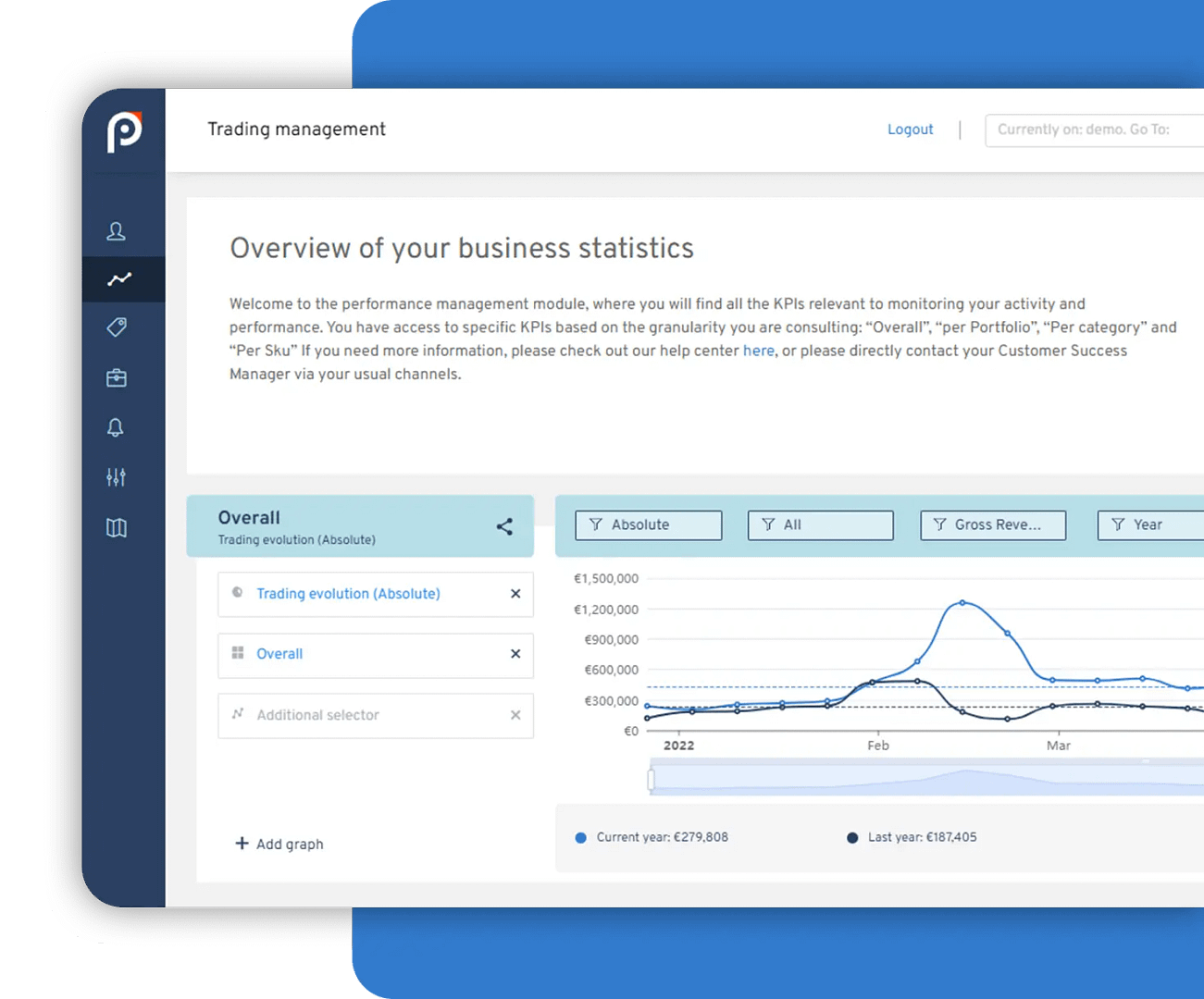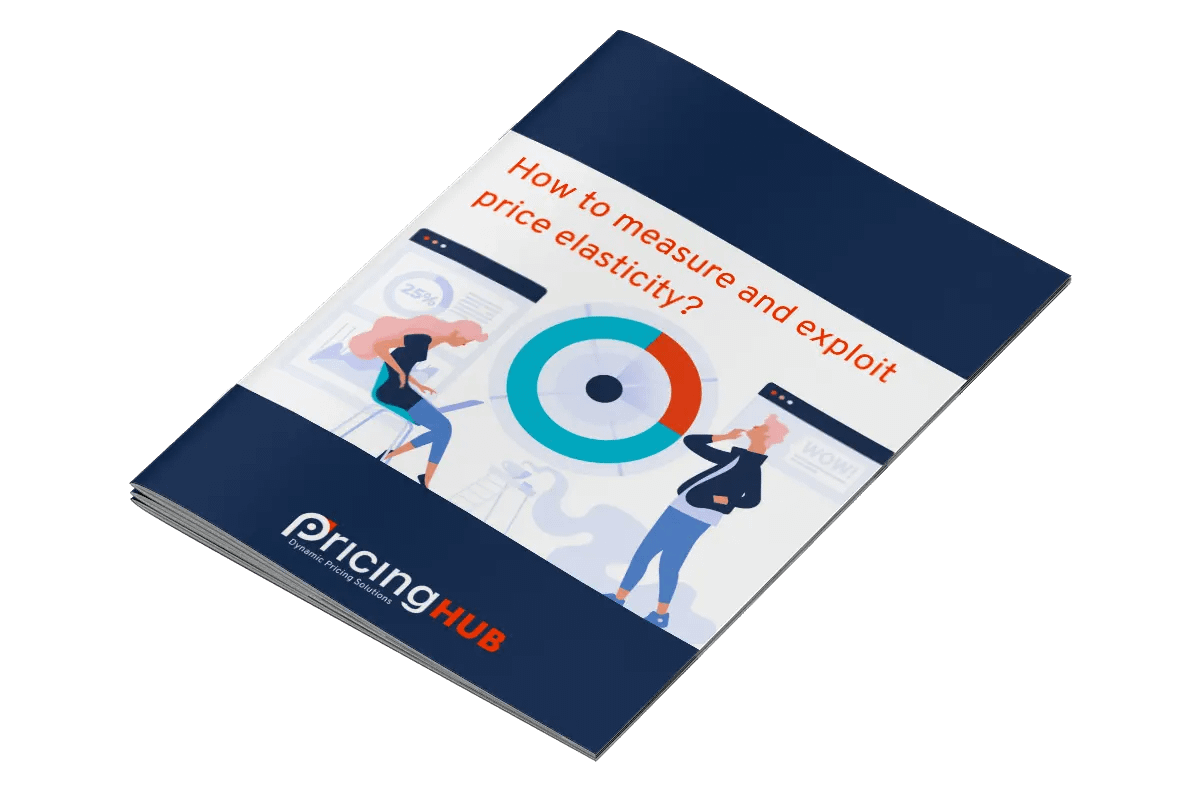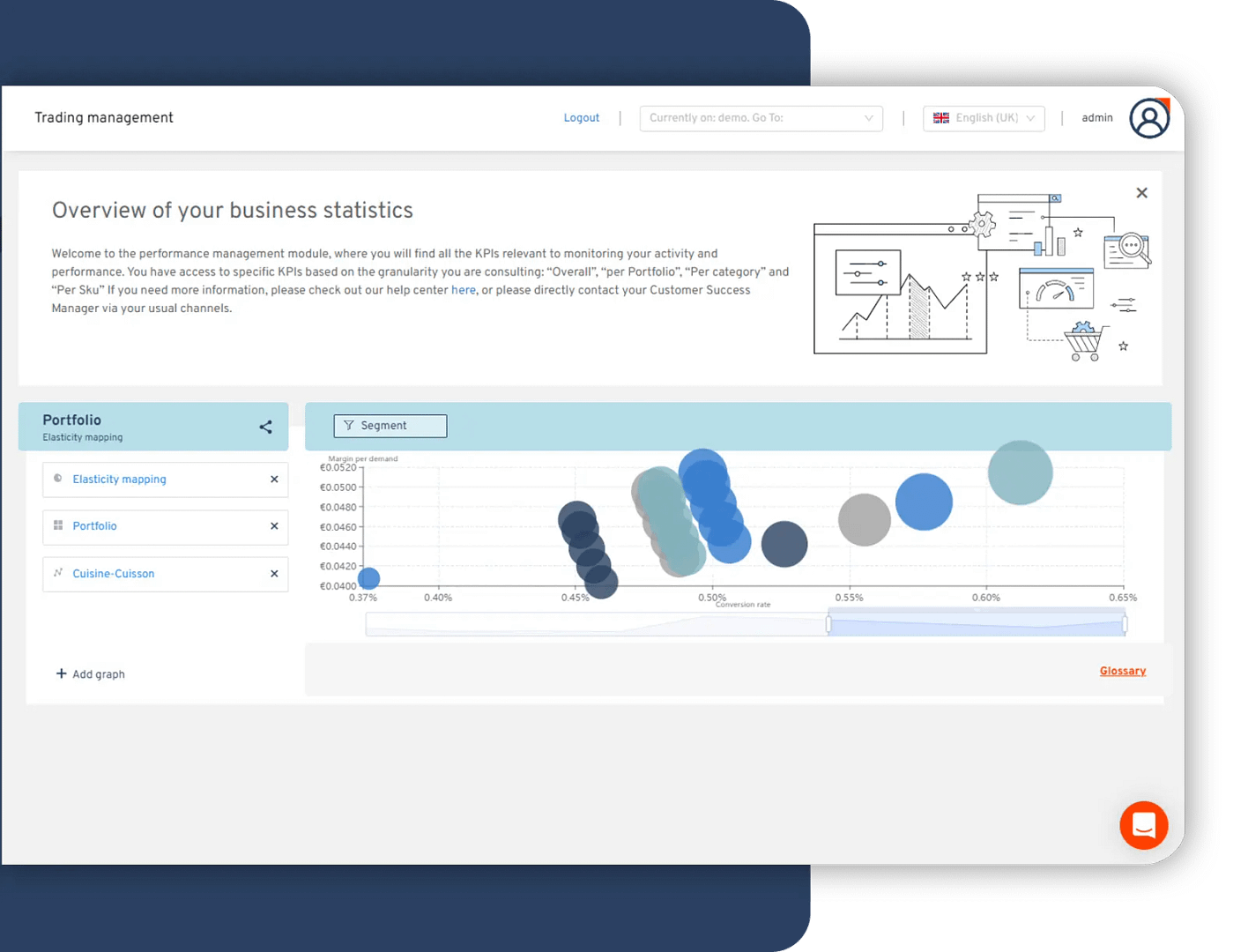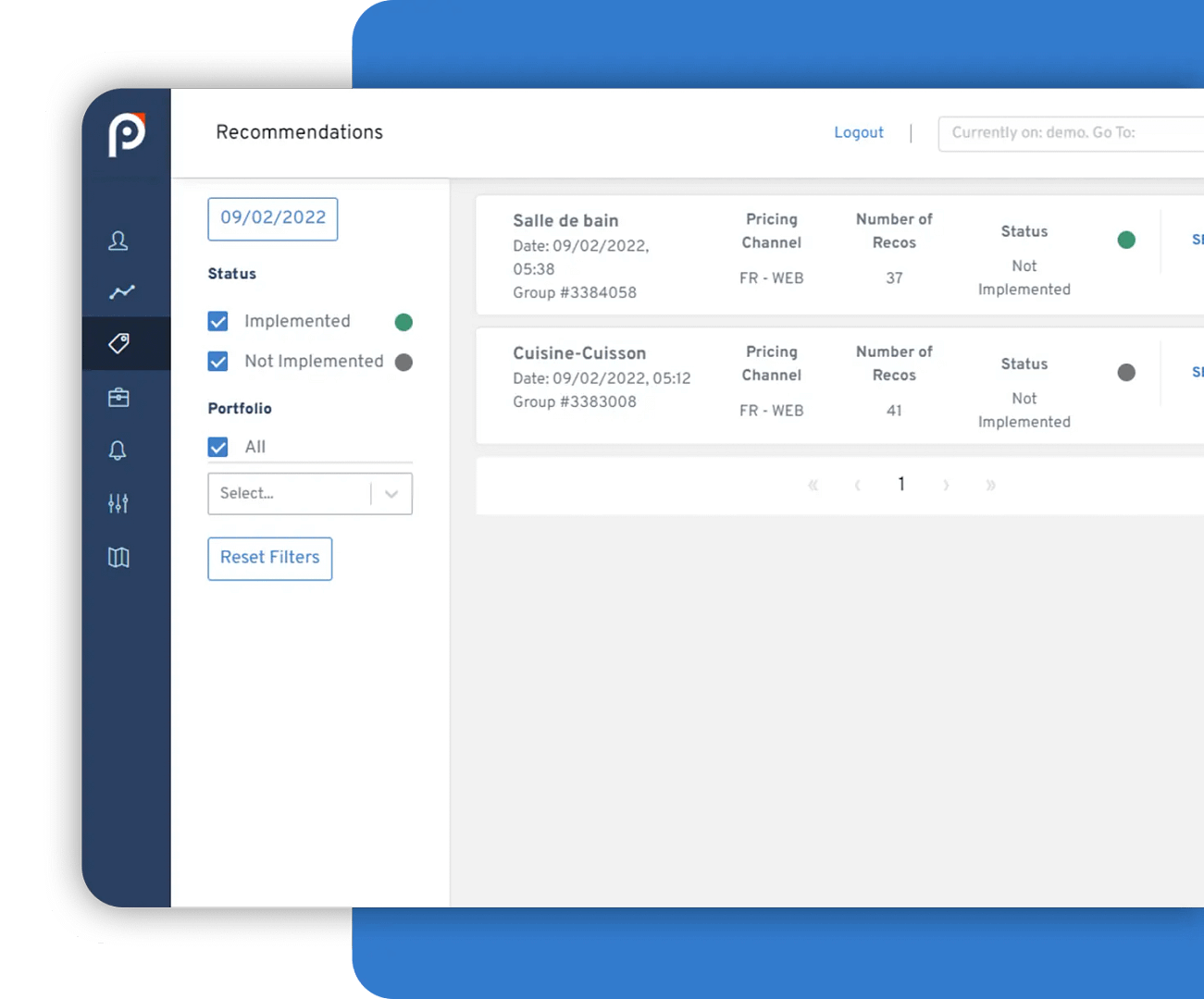A differentiating approach
Price elasticity at the heart of our solution
(Re)place your customers at the center of your pricing strategy! With PricingHUB, measure the price sensitivity of your consumers.
Improve your conversion rates
Detect business opportunities
Adjust prices across your entire catalog
The context
You have to be ready to adjust your pricing at any time and quickly, according to the consumer context. This includes the competition. With PricingHUB, experiment and adjust your prices in record time. Your prices are always adjusted at the right time.
“Moving to PricingHUB has been a revolution. We went from a relatively non-dynamic pricing to a pricing based on conversion, and therefore on the consumer’s price acceptability!”
Understand everything about price elasticity
Download our ebook to become unbeatable!
Download the ebook
The data
Our models are fed by various internal and external data sets with the highest possible level of granularity. We consolidate all relevant data sources and act on them. This gives you reliable, relevant, organized data that will allow you to make the right Pricing decisions.
Experimentation
Our experimental approach allows us to scientifically measure consumer price sensitivity and the impact of price optimization by isolating external noise (seasonal effect, contextual changes, etc…). The result: our engine quickly learns and you make informed decisions with reliable and relevant data.
Learn more about PricingHUB
Pricing expertise
More than a solution, a team of experts
Learn more
Pricing use cases
Strategic approach and flexible solution
Learn more
Customer experience & white papers
Essential reading for your Pricing strategy
Download
FAQ on the customer centric pricing
Definition and functioning
Customer centric pricing sets prices based on customers’ needs, behaviors, and perceptions rather than just costs or competitors. It uses data analysis and price elasticity (how demand changes with price) to find prices customers see as fair. This builds trust, loyalty, and competitiveness.
Benefits:
- Optimizes revenue by balancing price and demand
- Increases customer satisfaction and loyalty
- Helps businesses adjust prices in real time using AI-powered tools like PricingHUB
Additionally, studies show that satisfied customers are more tolerant of future price adjustments, which helps stabilize long-term relationships. For example, a PwC study revealed that consumers are, on average, willing to pay 16% more for a product if it is accompanied by an excellent customer experience. This customer-first methodology ensures businesses not only remain competitive but also build lasting trust and loyalty, solidifying their market position.
By aligning prices with what customers consider fair, businesses avoid pricing too high (which can seem unfair) or too low (which can hurt brand perception). This balance enhances trust and reduces frustration from mismatched prices.
PricingHUB’s tools help retailers adjust prices dynamically based on market and demand, improving the shopping experience and fostering long-term loyalty and positive word-of-mouth.
Instead of intrusive individual price personalization, PricingHUB uses price optimization by segment—such as by channel, location, or day of week—ensuring fairness and transparency.
Tailoring prices to context (store type, online vs in-store, competitor pricing) improves customer experience and supports growth, making pricing a strategic tool for loyalty and business success.
Automated pricing tools with AI and machine learning are essential. They calculate price elasticity, test pricing strategies, and adjust prices based on real market feedback.
PricingHUB’s solution continuously learns and adapts prices in real time, helping businesses stay competitive while meeting customer expectations through a data-driven, customer-focused approach. Are you looking for a pricing tool but unsure what criteria to consider? Learn more in our detailed article!
Evaluate the potential of price elasticity on your business
Meet with one of our Pricing experts
Contact us





